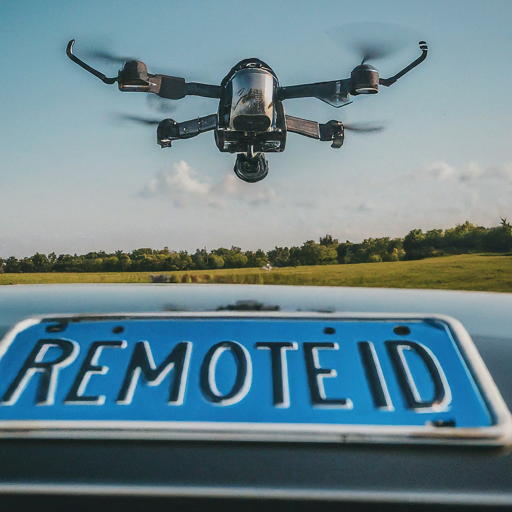The drone industry is buzzing with potential. These machines soar beyond the realm of mere toys or photography tools and into the arena of groundbreaking transportation and logistics solutions. However, the road to widespread drone adoption hasn't been without obstacles. Concerns about safety, accountability, and airspace management have loomed over the grand visions of drones.
That's where Remote ID steps in. Like the humble license plate revolutionized the automotive industry, this seemingly simple regulation carries the potential to transform drones from a niche curiosity into an organized, reliable, and ultimately, indispensable part of our world.
The Open Ocean Gets a Drone Upgrade
Let's ditch the doorstep delivery fantasy for a moment, and focus on where Remote ID truly enables immediate, transformative drone applications. Picture the vast expanse of the ocean. Here, the challenges of slow cargo ships and the limitations of manned aircraft leave room for innovation. Enter the autonomous drone:
- Payload Powerhouses: Recent advancements in hydrogen fuel cell technology promise unprecedented energy densities for drones. We're talking machines capable of carrying up to 55 pounds of payload – imagine the medical supplies, equipment, or crucial deliveries they could transport.
- Safety in the Swarm: Thanks to Remote ID, these drones form an accountable network. Their flight paths are meticulously tracked, ensuring safe distances and reassuring operators, and authorities alike. Bad actors in the open ocean? Those illicit drones won't be able to hide as easily with Remote ID broadcasting their information.
- The Need for Speed: Time is of the essence, whether it's delivering life-saving medicine to a remote island or critical tools to an offshore oil rig. These drone workhorses outpace traditional delivery methods, potentially reshaping the very meaning of "urgent".
Hub-and-Spoke: The Drone-Powered Efficiency Boost
Let's shift our gaze to the outskirts of a bustling city. Imagine a central distribution hub teeming with incoming packages. Traditionally, from here begins the slow crawl of delivery vans battling traffic. Now, Remote ID changes the game:
- The Last-Mile Sprint: A fleet of drones, each verified by Remote ID, awaits. They're not aiming for every balcony, but strategically located drop-off points. Think micro-fulfillment centers in neighborhoods, where the last leg of the journey is completed by traditional methods, but vastly expedited thanks to the drones.
- Traffic? What Traffic?: Those dreaded gridlocks on city streets? Drones bypass them entirely. Remote ID, coupled with sophisticated traffic management systems, ensures they navigate safely above the fray.
Emergency Response Takes Flight
Every second counts in a crisis. Firefighters battling a blaze, ambulance crews racing to an accident – these are moments where drones can make a true difference.
- Eyes in the Sky and Beyond: A drone carrying thermal imaging gear becomes a firefighter's best friend, identifying hotspots invisible from the ground. Medical drones pinpoint the location of lost hikers, transmitting real-time coordinates via Remote ID to rescuers.
- Life-Saving Deliveries: Minutes saved can mean lives saved. Drones equipped with emergency supplies like defibrillators or specialized medication navigate rapidly towards locations pinpointed by Remote ID systems. This isn't about replacing manned emergency response, but augmenting it in critical ways.
AI: The Co-Pilot of the Future
The treasure trove of real-time data generated by Remote ID feeds directly into the evolving world of artificial intelligence:
- Skyways of the Future: Imagine complex, ever-shifting flight paths optimized by AI. Think of it like the ultimate traffic management system for drones, ensuring efficiency and collision avoidance.
- Obstacle? Not for Long: Drones with sophisticated onboard sensors and AI-backed vision systems leverage Remote ID to identify not only other drones but also anticipate collisions with obstacles and adjust accordingly.
- Decisions Aided By Data: Remote ID isn't just about compliance – it's about painting a detailed picture of how and where drones operate. This data fuels AI-powered analytics for logistics planning, infrastructure inspection needs, and countless other applications we haven't even thought of yet.
The Foundation of Trust
Remote ID, at its core, is about building public trust in drone technology. It's about demonstrating accountability, fostering collaboration, and ultimately proving that these incredible machines can make our world faster, safer, and more efficient. The journey ahead will undoubtedly have challenges, but with Remote ID as a starting point, the future of drone innovation is clear for takeoff.
What about you? What drone-powered possibilities fueled by Remote ID set your imagination alight? Share them below!
